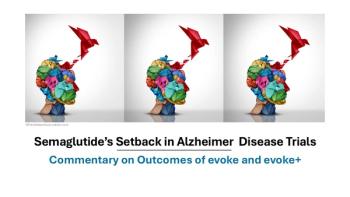
Abnormal Uterine Bleeding: A Primary Care Primer
Abnormal uterine bleeding can be defined as bleeding that deviates from the patient's normal pattern; it may be heavier, more frequent, or abnormal in timing. Bleeding of any kind in a postmenopausal patient should be considered abnormal unless she is receiving hormonal therapy that is associated with regular cyclic withdrawal bleeding.
Abnormal uterine bleeding (AUB) can be defined as bleeding that deviates from the patient's normal pattern (Box); it may be heavier, more frequent, or abnormal in timing. Bleeding of any kind in a postmenopausal patient should be considered abnormal unless she is receiving hormonal therapy that is associated with regular cyclic withdrawal bleeding.
AUB accounts for 20% of visits to gynecologists. An estimated 30% of women report menorrhagia annually.1,2 This debilitating condition is the indication for two thirds of hysterectomies and nearly 25% of gynecologic operations.
AUB may occur at any time during the reproductive years; however, it is most prevalent during perimenarche and perimenopause, when women tend to have anovulatory cycles. These cycles increase the likelihood of unscheduled--and often heavy--bleeding.
Menstrual problems, which affect as many as 75% of perimenarchal adolescents, are the leading reason for physician visits by teenagers.3 Menstrual irregularities in adolescence are thought to result from slow maturation of the hypothalamic-pituitary-ovarian axis and can last 2 to 5 years after menarche.4 These irregularities are equally prevalent in perimenopausal women; 75% of gynecologic consultations in perimenopausal and postmenopausal women are for AUB.5
In this article, we review the recommended diagnostic approach to and treatment options for AUB.
DIAGNOSIS
History and physical examination. The successful evaluation and treatment of AUB depends on a detailed history taking. Ask about age at menarche, cycle length, intermenstrual interval, quantity of bleeding, intermenstrual bleeding, and medication use (particularly hormones). Moliminal, or premenstrual, symptoms, such as breast tenderness and weight gain, result from elevated progesterone levels after ovulation and are presumptive evidence of ovulation. Although not all women with ovulatory cycles menstruate every 28 days, intermenstrual intervals of more than 35 days suggest anovulatory cycles.
Complications of pregnancy are the most common cause of abnormalities in the timing or amount of vaginal bleeding in women of reproductive age. These complications include threatened, missed, or incomplete abortion; ectopic pregnancy; and gestational trophoblastic disease. Therefore, the initial evaluation must include a pregnancy test (Algorithm).6
The primary criterion for a diagnosis of menorrhagia is a menstrual volume of 80 mL or more. Patient estimates of blood loss are subjective and often inaccurate. More than half of women who report menorrhagia have menstrual blood loss of less than 80 mL.7 Quantitative measures of blood loss--such as weight or the pictorial blood loss assessment chart--provide a more accurate assessment than the number of pads and tampons used but may be impractical in routine clinical evaluations.1,8,9
The workup for AUB includes a thorough pelvic and abdominal examination. A complete blood cell count may be helpful in assessing blood loss, but an evaluation for bleeding abnormalities is not necessary unless warranted by the history. An extensive anemia evaluation is rarely indicated. Tests to evaluate sex steroids, gonadotropins (follicle-stimulating hormone [FSH] and luteinizing hormone [LH]), and thyroid function are not recommended in the absence of appropriate clinical symptoms. Levels of thyroid-stimulating hormone and prolactin may be measured if results of human chorionic gonadotropin testing are negative in a patient with amenorrhea.
Biopsy. Endometrial biopsy is generally performed in women older than 40 years to rule out hyperplasia and endometrial cancer, which frequently results from exposure to prolonged unopposed estrogen (as occurs in chronic anovulation). Younger women with a history of chronic anovulation or polycystic ovary syndrome, or a history of treatment with tamoxifen or estrogen, may also require endometrial biopsy. Note that neither endometrial biopsy nor dilatation and curettage will sample the entire uterine cavity.10 In younger women, pregnancy should always be ruled out before an invasive diagnostic test is performed or medical therapy is initiated.
If AUB persists despite normal biopsy results, referral to a gynecologist for hysteroscopic evaluation may be indicated. Hysteroscopy is the preferred method for diagnosis of anatomic abnormalities such as endometrial polyps (Figure) and submucosal myomas, which can be sources of AUB. Endometrial biopsy is most useful in making a histologic diagnosis of endometrial cancer or hyperplasia; however, polyps and myomas can be missed in both endometrial biopsy and dilatation and curettage procedures.11
Imaging modalities. Transvaginal ultrasonography has become part of the routine evaluation of AUB. Although ultrasonographic measurement of the endometrial stripe is most useful in postmenopausal women, pelvic ultrasonography is also used to detect anatomic abnormalities in all women with AUB. Measurement of the endometrial stripe in premenopausal women does not have the same sensitivity in detecting endometrial neoplasia as it does in postmenopausal women. In younger women, the endometrial thickness varies as a result of hormonal influences; therefore, in these women a 10- to 12-mm endometrial stripe generally indicates the need for a further workup. In postmenopausal women, however, the cutoff is 5 mm.1,12
Saline sonohysterography is another useful radiographic tool in the diagnosis of anatomic causes of AUB. This outpatient procedure can be performed by primary care clinicians who have been trained in it. Sonohysterography is helpful in visualizing polyps and other uterine abnormalities that may be a source of AUB and that may be missed with transvaginal ultrasonography alone.
TREATMENT
In this section, we will focus on medical treatment of AUB. Patients who require surgical correction and those in whom medical therapy fails are best referred to a gynecologist. Before medical therapy is initiated, endometrial hyperplasia, neoplasia, and cancer must be ruled out.
Contraceptive hormonal therapies. These therapies are indicated for patients with anovulatory AUB who also desire effective contraception.
Combination estrogen and progesterone. Combination oral contraceptive pills (OCPs) are the most frequently prescribed treatment in women with AUB who also desire contraception. Few clinical trials--but a significant amount of anecdotal clinical evidence--support their use. Menstrual blood loss decreases by about 40%. In one randomized clinical trial, combined estrogen and progesterone, low-dose danazol, naproxen, and mefenamic acid were about equally effective.13 Low-dose OCPs (less than 30 to 35 µg) are more likely to be associated with unscheduled bleeding and should be avoided.1
Oral progestins. In patients who desire contraception and cannot or choose not to take estrogen, oral progestins are an option. Cyclic short-term oral progestins (fewer than 5 days per month) are ineffective for controlling regular heavy bleeding.14 However, if oral progestins are given for at least 21 days of the cycle, menstrual bleeding can be decreased by 87%.15
In women with endometrial hyperplasia, progesterone is frequently recommended to reverse the effects of prolonged unopposed estrogen. Although many women tolerate progesterone well, some experience weight gain, headache, and breast tenderness.
Injectable progestins. Depot medroxyprogesterone acetate (DMPA) decreases menstrual blood loss and provides reliable contraception. About 50% of women report amenorrhea after 1 year of use. In women who have spotting and unscheduled bleeding with DMPA, conjugated estrogens for 10 to 21 days will minimize bleeding. One of the most significant noncontraceptive benefits of DMPA is an 80% reduction in the risk of endometrial cancer.16 Rare but possible side effects of DPMA are similar to those of oral progestins and may also include depression. Although long-term infertility may be a concern among patients, fertility returns in 70% of women within 12 months. Recently, the FDA issued a "black-box" warning to the product labeling for DMPA. Prolonged use of this agent may result in loss of bone mineral density that is not entirely reversible with discontinuation.
Progesterone-impregnated intrauterine devices (IUDs). This recently developed and often underutilized contraceptive device is associated with decreased menstrual loss. The levonorgestrel-releasing IUD delivers low doses of levonorgestrel in a slow-release formulation that can provide contraception for up to 5 years. The decrease in menstrual blood flow is quite substantial, and the system is more effective than OCPs and oral progestins.15 Some authors have reported reduction in menstrual blood loss of as much as 96%.17
Noncontraceptive hormonal therapies. Cyclic short-term (less than 5 days) oral progestin therapy is ineffective in controlling regular heavy bleeding. Use of these agents for 21 or more days may reduce menstrual bleeding by 87%.14,15
Unscheduled bleeding in postmenopausal women must be investigated before the initiation of medical therapy. Endometrial hyperplasia and endometrial cancer must be ruled out in women who are using hormone replacement therapy. Women who are using sequential therapy may have regular withdrawal bleeding, which occurs after progesterone is stopped. With continuous therapy, there should be no unscheduled bleeding after 3 months.
Although gonadotropin-releasing hormone (GnRH) analogs and danazol prevent ovulation and pregnancy, their primary indication is not contraception. These agents down-regulate the pituitary gland, which reduces FSH, LH, and estradiol levels and produces "medical menopause." The principal indications for GnRH analogs include endometriosis, reduction in leiomyoma size, and precocious puberty. Danazol is also indicated for endometriosis but, unlike GnRH analogs, it is associated with androgenic side effects. Amenorrhea and hot flashes often occur with both GnRH analogs and danazol. Bone loss is also a concern with more than 6 months of use. Add-back therapy with low doses of estrogen and progestins can be given if there is a clinical need to use these drugs for more than 6 months.
Because of the costs and side effects of GnRH and danazol, they are used primarily to limit endometrial growth before hysteroscopy or in patients with severe thrombocytopenia, severe anemia, or other blood dyscrasias. In the last group, menses may result in life-threatening hemorrhage.
Patients at risk for vaginal hemorrhage as a result of bleeding disorders are frequently referred to a gynecologist. The most important principle in the management of these patients is prevention.
Medical induction of amenorrhea should begin before the initiation of antineoplastic drugs, because these drugs may cause iatrogenic thrombocytopenia. Options for therapeutic amenorrhea include continuous oral contraceptives, DPMA, GnRH analogs, and continuous oral progestins. Progesterone-impregnated IUDs are effective, but they may cause fever if morbidity develops as a result of neutropenia.18-20
Nonhormonal therapies. Patients with no identifiable cause of AUB can be treated with nonhormonal therapies. Abundant data suggest that NSAIDs and antifibrinolytic agents are effective and well tolerated in the treatment of chronic menorrhagia. NSAIDs reduce menstrual blood flow by 20% to 46%.21-24 They are less expensive than other agents, have acceptable side effects, and relieve dysmenorrhea. The agents and dosages most commonly used are:
- Mefenamic acid, 500 mg tid for 3 to 5 days during menses.
- Ibuprofen, 400 mg tid.
- Meclofenamic acid, 500 mg initially, followed by 250 mg every 6 hours, starting with the onset of bleeding. It is not generally used for more than 2 to 3 days.
- Diclofenac, 50 mg tid. In some patients, a 100-mg starting dose may be more effective.
Tranexamic acid and aminocaproic acid are the most commonly prescribed antifibrinolytic agents. They act within 2 to 3 hours after administration, do not interfere with fertility, and may be more effective than NSAIDs in treating acute menorrhagia.13,25 Tranexamic acid is dosed at 1 to 1.5 mg tid or qid. Aminocaproic is dosed at 5 g during the first hour, followed by a continuing rate of 1 or 1.25 g per hour for about 8 hours, or until bleeding has been controlled.
Editor's note: This article was supported by the Reproductive Biology and Medicine Branch Intramural Research Program, National Institutes of Health.
References:
REFERENCES:
1.
Oehler MK, Rees MC. Menorrhagia: an update.
Acta Obstet Gynecol Scand.
2003;82:405-422.
2.
Goldstein SR. Menorrhagia and abnormal bleeding before the menopause.
Best Pract Res Clin Obstet Gynaecol.
2004;18:59-69.
3.
Slap GB. Menstrual disorders in adolescence.
Best Pract Res Clin Obstet Gynaecol
. 2003;17:75-92.
4.
Quint EH, Smith YR. Abnormal uterine bleeding in adolescents.
J Midwifery Women's Health.
2003; 48:186-191.
5.
Morana B, Zarbo R, Puglisi F, Zarbo G. Dysfunctional uterine bleeding: medical therapies.
Minerva Ginecol.
2003;55:241-251.
6.
Speroff L, Fritz MA.
Clinical Gynecologic Endocrinology and Infertility.
7th ed. Philadelphia: Lippincott Williams & Wilkins; 2005.
7.
Halberg L, Hogdahl AM, Nilsson L, Rybo G. Menstrual blood loss--a population study. Variation at different ages and attempts to define normality.
Acta Obstet Gynecol Scand.
1966;45:320-351.
8.
Higham JM, O'Brien PM, Shaw RW. Assessment of menstrual blood loss using a pictorial chart.
Br J Obstet Gynaecol.
1990;97:734-739.
9.
Chimbira TH, Anderson AB, Turnbull A. Rela-tion between measured menstrual blood loss and patient's subjective assessment of loss, duration of bleeding, number of sanitary towels used, uterine weight and endometrial surface area.
Br J Obstet Gynaecol.
1980;87:603-609.
10.
Spencer CP, Whitehead MI. Endometrial assess-ment re-visited.
Br J Obstet Gynaecol.
1999;106:623-632.
11.
Lo KW, Yuen PM. The role of outpatient diag-nostic hysteroscopy in identifying anatomic pathology and histopathology in the endometrial cavity.
J Am Assoc Gynecol Laparosc.
2000;7:381-385.
12.
Mahoney SF, Armstrong A. Accurate diagnosis of postmenopausal bleeding.
Nurse Pract.
2005;30: 61-63.
13.
Fraser IS, McCarron G. Randomized trial of 2 hormonal and 2 prostaglandin-inhibiting agents in women with a complaint of menorrhagia.
Aust N Z J Obstet Gynaecol.
1991;31:66-70.
14.
Lethaby A, Irvine G, Cameron I. Cyclical progestogens for heavy menstrual bleeding.
Cochrane Database Syst Rev.
2000;(2):CD001016.
15.
Irvine GA, Campbell-Brown MB, Lumsden MA, et al. Randomised comparative trial of the levonorgestrel intrauterine system and norethisterone for treatment of idiopathic menorrhagia.
Br J Obstet Gynaecol.
1998;105:592-598.
16.
Kaunitz AM. Current options for injectable contraception in the United States.
Semin Reprod Med.
2001;19:331-337.
17.
Milsom I, Andersson K, Andersch B, Rybo G. A comparison of flurbiprofen, tranexamic acid, and levonorgestrel-releasing intrauterine contraceptive device in the treatment of idiopathic menorrhagia.
Am J Obstet Gynecol.
1991;164:879-883.
18.
Miller L, Hughes JP. Continuous combination oral contraceptive pills to eliminate withdrawal bleeding: a randomized trial.
Obstet Gynecol.
2003; 101:653-661.
19.
Xiao B, Wu SC, Chong J, et al. Therapeutic effects of the levonorgestrel-releasing intrauterine system in the treatment of idiopathic menorrhagia.
Fertil Steril.
2003;79:963-969.
20.
Lhomme C, Brault P, Bourhis JH, et al. Prevention of menstruation with leuprorelin (GnRH agonist) in women undergoing myelosuppressive chemotherapy or radiochemotherapy for hematological malignancies: a pilot study.
Leuk Lymphoma.
2001;42:1033-1041.
21.
Lethaby A, Augood C, Duckitt K. Nonsteroidal anti-inflammatory drugs for heavy menstrual bleeding.
Cochrane Database Syst Rev.
2002;(1):CD000400.
22.
Fraser IS, Pearse C, Shearman RP, et al. Efficacy of mefenamic acid in patients with a complaint of menorrhagia.
Obstet Gynecol.
1981;58:543-551.
23.
Hall P, Maclachlan N, Thorn N, et al. Control of menorrhagia by the cyclo-oxygenase inhibitors naproxen sodium and mefenamic acid.
Br J Obstet Gynaecol.
1987;94:554-558.
24.
Bonnar J, Sheppard BL. Treatment of menorrhagia during menstruation: randomised controlled trial of ethamsylate, mefenamic acid, and tranexamic acid.
BMJ.
1996;313:579-582.
25.
Lethaby A, Farquhar C, Cooke I. Antifibrinolytics for heavy menstrual bleeding.
Cochrane Database Syst Rev.
2000;(4):CD000249.
Newsletter
Enhance your clinical practice with the Patient Care newsletter, offering the latest evidence-based guidelines, diagnostic insights, and treatment strategies for primary care physicians.
















































































































































































































































































